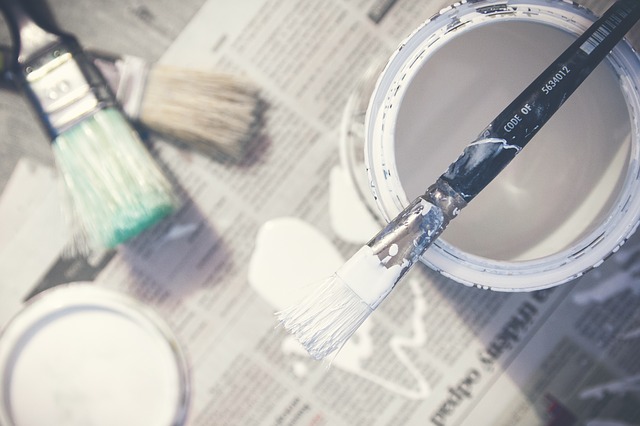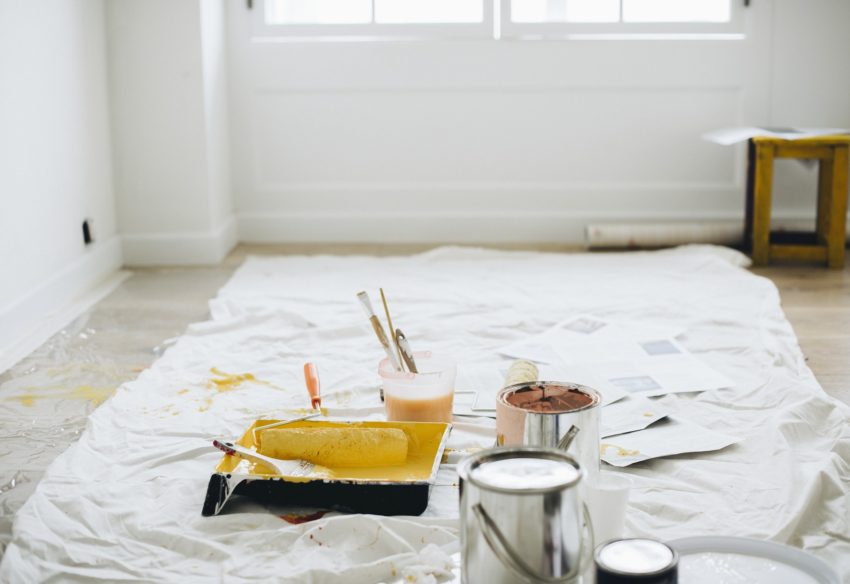Before you paint a wall, you should prepare it so the paint will adhere to the surface and look as good as you hoped it would. But even before you prime the surface of your wall, it’s very important to prepare the room itself.
It will take a bit of time and preparation, but trust us, this will save you a ton of time and frustration. Let’s break the process down into two chunks, one of which is preparing a space and the second is priming the wall for the actual paint job.
Preparing the Space
Painting can be a messy job. You need to consider all the surfaces that need to be covered or removed before you get to work. You can remove the furniture in the space you’ll be painting, or simply cover it with plastic. Cover the floor, preferably with something that isn’t too slippery, or else your job will be even more difficult. A canvas drop cloth is usually ideal for covering your floor. To be extra safe, use tape to hold the canvas drop cloth in place.
Remove all electrical outlet covers and light switch covers and turn off the breakers to the room you’ll be painting. You should also cover any exposed outlets with tape. Wear safety goggles and make sure you wear clothes that you don’t mind tossing once your project is complete.
Preparing the Wall for Painting
Now that your space is cleared, it’s time to turn your attention to the surface you’ll be painting. If the wall is covered in wallpaper, you’ll need to strip the surface with paper remover and a scraping tool. If the wall is covered with paint that is already chipping, make sure you scrape off any loose pieces before proceeding.
Now is the time to fill in any major dents, imperfections or holes in the surface. You can use the filler of your choice, making sure to smooth out the surfaces and applying a primer to the repaired area. Next, clean the wall to ensure there is no dust or cobwebs, both of which can create problems once you start applying the paint.
If you want to be absolutely sure your wall is clean, consider using trisodium phosphate or a mix of mild detergent and water. Rinse with a soft cloth or sponge and allow the surface to dry. Painter’s tape can now be applied to any trim adjacent to the wall you’ll be painting.

Before applying paint, many walls will require a primer. Surfaces like drywall, glossy or stained areas should be primed before paint is applied. Water-based primers are ideal for drywall, while oil-based primers are great for panels or heavily stained surfaces.
Start the priming process by applying your primer around the edges of the wall, then fill in the rest of the wall with a roller brush. Let the primer dry, and your wall is now ready to be painted.
Hit the Wall on a Home Search? Contact Ken Thieneman Today
Ken Thieneman has been building custom homes in the Louisville area for over three decades. If you live in Louisville, you’ve probably heard all about Ken Thieneman homes. They have a reputation for being among the best in the region. Many people assume that Ken Thieneman’s builds are also costly, but we always take great pleasure in seeing a client’s reaction when they find out that they can have a new custom home at a price that is totally within their budget.
If you’re looking for a home in the Louisville area, then talk to Ken Thieneman before settling for a home that doesn’t meet your needs. You might be surprised at what Ken can offer. Call us today to learn more about building the home you’ve always wanted.

